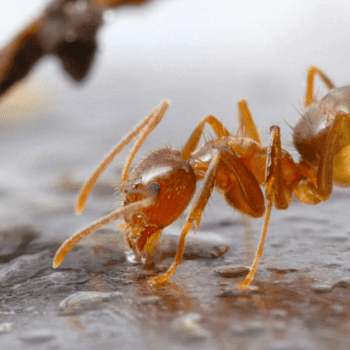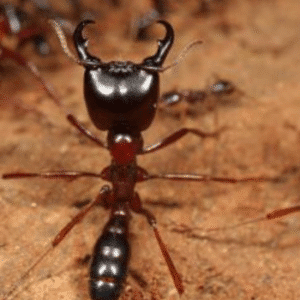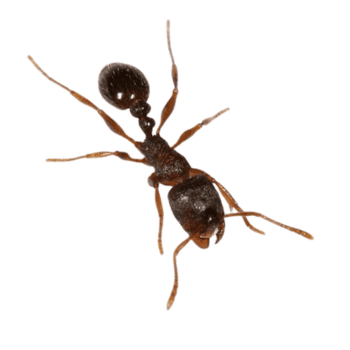Ants are social insects belonging to the family Formicidae and are among the most diverse and successful groups of organisms on Earth, with over 12,000 recognized species. They play critical roles in ecosystems
Call Us when you Need Help!
Ants
Ants are social insects belonging to the family Formicidae and are among the most diverse and successful groups of organisms on Earth, with over 12,000 recognized species. They play critical roles in ecosystems, including soil aeration, seed dispersal, and pest control, making them essential for environmental health and stability. Ants exhibit remarkable adaptability, thriving in various habitats ranging from tropical rainforests to urban areas, which underscores their evolutionary success and ecological significance. Classification of ants follows a hierarchical taxonomic system, starting from the Kingdom Animalia and progressing through Phylum Arthropoda, Class Insecta, and Order Hymenoptera, where they share close relationships with bees and wasps. The family Formicidae encompasses all ant species, which can be further categorized into 21 subfamilies, each representing unique evolutionary branches. This detailed classification aids in the understanding of their diversity and complex behaviors, as well as their ecological roles. Ants are known for their sophisticated social structures and collective intelligence, which enable them to coordinate tasks such as foraging, nest-building, and defense against predators. Their foraging strategies, dietary preferences, and complex reproductive behaviors further illustrate their adaptability and critical function in various ecosystems. However, certain ant species, such as fire ants and Pharaoh ants, pose significant challenges as invasive pests, leading to health risks and economic impacts, highlighting the dual nature of their ecological interactions. Overall, the study of ants encompasses a wide array of topics, including their anatomy, behavior, habitat preferences, and impact on ecosystems, making them a vital area of research in entomology and ecology. Their intricate social systems and ecological roles not only contribute to biodiversity but also reflect the dynamic interactions within the natural world.
Common Ants in India
Ants are social insects belonging to the family Formicidae and are among the most diverse and successful groups of organisms on Earth, with over 12,000 recognized species. They play critical roles in ecosystems, including soil aeration, seed dispersal, and pest control, making them essential for environmental health and stability. Ants exhibit remarkable adaptability, thriving in various habitats ranging from tropical rainforests to urban areas, which underscores their evolutionary success and ecological significance. Classification of ants follows a hierarchical taxonomic system, starting from the Kingdom Animalia and progressing through Phylum Arthropoda, Class Insecta, and Order Hymenoptera, where they share close relationships with bees and wasps. The family Formicidae encompasses all ant species, which can be further categorized into 21 subfamilies, each representing unique evolutionary branches. This detailed classification aids in the understanding of their diversity and complex behaviors, as well as their ecological roles. Ants are known for their sophisticated social structures and collective intelligence, which enable them to coordinate tasks such as foraging, nest-building, and defense against predators. Their foraging strategies, dietary preferences, and complex reproductive behaviors further illustrate their adaptability and critical function in various ecosystems. However, certain ant species, such as fire ants and Pharaoh ants, pose significant challenges as invasive pests, leading to health risks and economic impacts, highlighting the dual nature of their ecological interactions. Overall, the study of ants encompasses a wide array of topics, including their anatomy, behavior, habitat preferences, and impact on ecosystems, making them a vital area of research in entomology and ecology. Their intricate social systems and ecological roles not only contribute to biodiversity but also reflect the dynamic interactions within the natural world.
Classification
Ants are classified using a hierarchical system known as Taxonomic Classification, which categorizes living organisms into various levels based on shared characteristics. This system comprises eight stages: Kingdom, Phylum, Class, Order, Family, Subfamily, Genus, and Species. Each stage serves to refine the classification and provide a unique biological name for each organism, a process known as Biological Nomenclature.
Kingdom
The classification begins at the Kingdom level, which distinguishes between animals and plants. Ants belong to the Kingdom Animalia, indicating that they are animals
Phylum
Within the Kingdom Animalia, ants are further categorized into the Phylum Arthropoda. This classification is based on specific characteristics shared with other arthropods, such as having jointed legs and an exoskeleton
Class
Following the Phylum, ants are classified under the Class Insecta, grouping them with other similar organisms like bees and flies
Order
The next level is Order, where ants are categorized into the Order Hymenoptera. This order includes not only ants but also bees and wasps, reflecting their close evolutionary relationships
Family
Ants are then classified into the Family Formicidae. This family encompasses all ant species, which are studied under this shared familial designation
Subfamily
Within the Formicidae family, ants can be divided into various subfamilies. For instance, the common meat ant belongs to the Subfamily Dolichoderinae. There are currently 21 recognized subfamilies of ants, each representing different evolutionary branches within the family
Genus
The Genus is a crucial taxonomic rank that provides the fundamental identity for an organism. For the common meat ant, the Genus is identified as Iridomyrmex. The Genus name is typically written in italics and precedes the species name
Species
Finally, the Species is the most specific classification level, designating the exact organism being studied. The species name of the common meat ant is “Purpureus,” distinguishing it from other ant species
This systematic classification helps biologists and researchers identify and study the vast diversity of ant species and their ecological roles. Ants are known to be highly diverse, with over 12,000 species recognized globally, making them one of the most successful groups of insects on Earth
Types of Ants
Ants are a diverse group of insects belonging to the family Formicidae, and they are found in almost every habitat on Earth. Their adaptability and social behavior allow them to thrive in various environments, leading to a multitude of species with unique characteristics. Below is a detailed overview of some common types of ants, their distinguishing traits, and habitats.

Pharaoh Ants
Pharaoh ants (Monomorium pharaonis) are small, typically measuring only about 1/16 inch in length, and are easily identifiable by their golden color. These ants prefer warm, humid environments, commonly infesting kitchens and bathrooms in homes, as well as hospitals and restaurants. Pharaoh ants can be particularly challenging to control due to their propensity to establish multiple colonies and nests. It is crucial to address infestations quickly, as they can spread bacteria such as salmonella, staph infections, and clostridium (botulism)

Fire Ants
Fire ants, known for their reddish-brown coloration, are notorious for their aggressive behavior and painful stings. They are prevalent in the southern regions of the United States, constructing large, conspicuous mounds. Unlike many other ant species that bite, fire ants possess a unique stinger that injects venom, causing a burning sensation and often resulting in pustules on the skin .
Their defensive behavior makes them easily recognizable and a significant nuisance when their nests are disturbed.

Ants
Carpenter Ants
Carpenter ants (Camponotus spp.) are large, black ants recognized for their wood-excavating habits. Found primarily in forests, these ants create galleries in wood to build nests for their colonies. They can invade homes, especially those built in wooded areas, in search of food, usually targeting damp or decaying wood. Although they rarely cause structural damage, some species, such as the black carpenter ant (Camponotus pennsylvanicus), are notable pests when they establish nests within buildings

Crazy Ants
Crazy ants (Nylanderia spp.) are named for their erratic and fast movements. They are an invasive species in various regions, causing concern due to their ability to displace native ant populations. Crazy ants can thrive in a wide range of environments, contributing to their resilience and adaptability .
Their unpredictable behavior and foraging patterns make them an interesting subject of study within the ant community.

Army Ants
Army ants (Dorylus spp.) are known for their nomadic lifestyle and highly organized swarms that move in search of food. These ants are typically larger than many other species and possess powerful mandibles. While they do not typically establish permanent nests, they can create temporary ones and are known for their aggressive foraging behavior

Pavement Ants
Pavement ants (Tetramorium caespitum) are commonly found in urban areas and are recognizable by their black coloration and small size. They build nests in cracks in pavement and sidewalks, leading to their name. Pavement ants are often observed foraging for food, and while they may not pose significant health risks, their presence can be a nuisance
Physical Structure
Ants possess a unique anatomical structure that distinguishes them from other insects. Their bodies are divided into three primary segments: the head, mesosoma, and metasoma. The head is equipped with two geniculate (elbowed) antennae that serve as sensors for chemicals, air currents, and vibrations, while also facilitating communication through touch. Additionally, the mandibles, or strong jaws, are essential for carrying food, constructing nests, and defending against predators. The mesosoma, or thorax, houses the legs and, in reproductive individuals, the wings. Ants’ legs end in hooked claws, enabling them to climb surfaces effectively. Queens, after their nuptial flight, shed their wings, leaving behind distinctive stubs.
The metasoma, or abdomen, includes the gaster, which is crucial for various functions, including digestion and reproduction. Notably, the petiole, which forms a narrow waist between the mesosoma and gaster, can have one or two nodes, playing a role in ant identification.
Ants exhibit remarkable strength relative to their size, capable of lifting objects up to 50 times their own body weight. This extraordinary strength arises from their efficient muscular system and the design of their exoskeleton, allowing them to perform tasks essential for the colony’s survival, such as foraging and nest construction
Navigational Behavior
Ants demonstrate sophisticated navigational skills that integrate various sensory inputs. They rely on visual cues, scent trails, and even celestial navigation to find their way. For instance, desert ants utilize a combination of terrestrial visual cues and path integration to navigate effectively, allowing them to locate food sources.
Research indicates that when ants are foraging on uneven surfaces, they may adjust the position of their heads to maintain a horizontal view, reducing visual noise and enhancing navigation accuracy.This behavior illustrates their adaptability in different environments and terrains
Social Behavior and Collective Intelligence
Ants exhibit a complex social structure characterized by collective decision-making and labor allocation. Unlike individual cognitive processes typically studied in psychology, ant colonies operate as dynamic systems, where the interactions among individuals lead to emergent behaviors at the colony level. For example, ants can coordinate their activities, such as foraging and nest-building, through chemical communication and coordinated movement, allowing for efficient resource use and colony maintenance. The adaptability of ant behavior is also reflected in their cognitive capabilities. Some species, like Atta cephalotes, have workers with varying brain structures correlated with the complexity of tasks they perform. Their brains contain a structure called the mushroom body, linked to learning and memory, which is proportionally larger in workers involved in more complex behaviors
Global Distribution
Ants are a highly diverse and adaptable group of insects, with species found across nearly every terrestrial habitat on Earth. Their distribution is influenced by a variety of ecological factors, including climate, soil type, and vegetation.
Ants exhibit a latitudinal gradient of species richness, with the highest diversity located in tropical regions. They inhabit various ecosystems, from rainforests and savannas to deserts and temperate forests. The total global biomass of ants is estimated to be significant, with careful studies suggesting that it is around 12 megatons of dry carbon, representing about 20% of the total human biomass
Habitat Preferences
Ants can thrive in a wide range of habitats. For instance, leafcutter ants, which are primarily found in South and Central America and parts of the southern United States, demonstrate remarkable adaptability in their foraging behaviors. They can carry weights up to twenty times their own body weight, showcasing their ability to exploit their environment effectively. Additionally, these ants form extensive colonies that can span over 30 meters and comprise millions of individuals, reflecting their complex social structures and habitat needs
Impact of Environmental Changes
Ants play a crucial role in understanding the effects of habitat loss and fragmentation on ecosystems. Their diversity and abundance make them key indicators of ecological health. For example, studies in Finland have shown that restored mire habitats can quickly attract a variety of ant species, demonstrating the resilience and adaptability of these insects in response to environmental restoration efforts
Navigation and Habitat Use
In their search for food, ants utilize sophisticated navigational strategies, often guided by visual cues from their surroundings. Research indicates that they rely on panoramic views to help navigate back to their nests, adjusting their paths based on the surrounding landscape and prominent landmarks. This ability to adapt their navigation strategies to different habitats is vital for their survival and success in diverse environments.
Foraging Behavior
Ants exhibit a diverse range of dietary preferences and foraging behaviors, making them versatile foragers in various ecosystems. Their diet typically consists of sugary substances, proteins, and other organic materials, reflecting their omnivorous nature. Most ant species act as generalists, consuming a wide variety of food sources, while some have adapted to specialized feeding strategies.
Foraging is a critical activity for ant colonies, as it ensures the acquisition of food necessary for the colony’s survival. The foraging patterns of ants can vary significantly among species and are influenced by environmental factors, resource availability, and individual experiences. Research on colonies of Cerapachys biroi has shown that ants may take on specific roles based on their past foraging success. Ants rewarded for successful foraging increased their foraging efforts, while those that experienced failure shifted towards other roles, such as brood care, demonstrating a remarkable level of adaptability. Ants utilize various strategies for efficient foraging, including path foraging, where established routes to reliable nectar sources are maintained. This behavior ensures that the colony’s sustenance is met while allowing replete workers to store food by becoming engorged, thus optimizing their foraging success. The navigation techniques employed by ants include the use of pheromone trails, visual landmarks, and even solar cues, showcasing their complex behavioral adaptations
Nutritional Preferences
Ants are known to feed on a wide range of food items, including nectar, seeds, fungi, and other insects. Some species, such as army ants (Eciton burchellii), exhibit aggressive predatory behaviors, targeting various invertebrates and contributing to the ecological balance by regulating pest populations. Furthermore, certain ants have developed mutualistic relationships with aphids, tending them for honeydew in exchange for protection from predators. In addition to their role as predators, ants also participate in pollination activities, although this is generally less significant compared to bees. This varied diet not only supports their colonies but also influences the ecological dynamics of their habitats by aiding in seed dispersal and contributing to organic matter recycling.
Ecological Impact
The foraging activities of ants have far-reaching implications for the ecosystems they inhabit. By preying on pests and dispersing seeds, ants help maintain biodiversity and support the health of their environments. Their extensive foraging habits can significantly impact the abundance and distribution of other organisms within their ecosystems, demonstrating their crucial role as both predators and resource managers. Overall, the dietary flexibility and foraging behaviors of ants underline their importance in various ecological contexts.
Reproduction and Lifecycle
Ants exhibit a diverse range of reproductive strategies and life cycles, characterized by a complete metamorphosis that includes the stages of egg, larva, pupa, and adult. The reproductive process begins with a nuptial flight during which winged males and females, known as alates, leave their colonies to mate. This event typically occurs in late spring or early summer under warm and humid conditions, which facilitate flight and provide soft ground for nesting
Mating and Egg Laying
After mating, females seek suitable locations to establish new colonies. They break off their wings and commence laying eggs, which can be either fertilized or unfertilized. Fertilized eggs develop into diploid females (workers or queens), while unfertilized eggs produce haploid males (drones). The first batch of workers, known as nanitics, are smaller and less robust than subsequent generations but are vital for immediate colony tasks such as nest expansion and brood care
Mating and Egg Laying
The life cycle of ants involves several stages. Larvae undergo a series of four to five molts before entering the pupal stage, where they develop into adults. This process is influenced by various factors, including the nutrition that larvae receive, which can determine their eventual caste as workers or queens. The environment also plays a critical role, as larvae and pupae require stable temperatures for optimal development. During the larval stage, workers feed the larvae through a process called trophallaxis, which involves regurgitating liquid food from their crops. Larvae may also receive solid food, such as prey or seeds, provided by the workers

